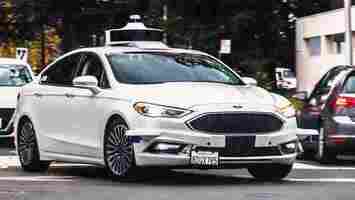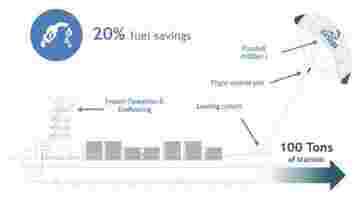With Lyft selling its self-driving division, the market will be dominated by a few rich companies
News broke this week that Woven Planet, a Toyota subsidiary, will acquire Level 5, Lyft’s self-driving unit , for $550 million. The transaction, which is expected to close in Q3 2021, includes $200 million paid upfront and $350 million over a five-year period.

Toyota will gain full control of Lyft’s technology and its team of 300. Lyft will remain in the game as a partner to Toyota’s self-driving efforts, providing its ride-hailing service as a platform to commercialize the technology when it comes to fruition.
The Toyota–Lyft deal is significant because it comes on the back of a year of major shifts in the self-driving car industry. These changes suggest the autonomous vehicle market will be dominated by a few wealthy companies that can withstand huge costs and very late return on investment in a race that will last more than a few years.
The costs of self-driving car technology
Costs remain a huge barrier for all self-driving car projects. The main type of software powering self-driving cars is deep reinforcement learning , which is currently the most challenging and expensive branch of artificial intelligence. Training deep reinforcement learning models requires expensive compute resources. This is the same technology used in AI systems that have mastered complicated games such as Go, StarCraft 2 , and Dota 2 . Each of those projects cost millions of dollars in hardware resources alone.
However, in contrast to game-playing AI projects, which last between a few months to a few years, self-driving car projects take several years—and maybe more than a decade—before they reach desirable results. Given the complexities and unpredictability of the real world, designing and testing the right deep learning architecture and reward, state, and action space for self-driving cars is very difficult and costly. And unlike games, the reinforcement learning models used in driverless cars need to gather their training experience and data from the real world, which is fraught with extra logistical, technical, and legal costs.
Some companies develop virtual environments to complement the training of their reinforcement learning models. But those environments come with their own development and computing costs and aren’t a full replacement for driving in the real world.
Equally costly is the talent needed to develop, test, and tune the reinforcement learning models used in driverless cars.
All of these expenses put a huge strain on the budgets of companies running self-driving car projects. According to reports, the sale of Level 5 will cut Lyft’s net annual operating costs by $100 million. This will be enough to make the company profitable. Uber, Lyft’s rival, also sold its driverless car unit , Advanced Technologies Group (ATG), in December because it was losing money.
So far, no company has been able to develop a profitable self-driving car program. Waymo, Alphabet’s self-driving subsidiary, has launched a fully driverless ride-hailing service in parts of Arizona. But it is still losing money on the project and is in the process of expanding the service to other cities in the U.S.
Driverless cars are not ready for primetime
Not long ago, it was generally believed that self-driving cars were a solved problem and it would only take a couple of years of development and training to get them ready for production. Several companies had hailed launching robo-taxi services by 2018, 2019, and 2020. A few carmakers promised to make fully self-driving cars available to consumers.
But we’re in 2021, and it’s clear that the technology is still not ready. Our deep learning algorithms are not on par with the human vision system . That’s why many companies need to use complementary technologies such as lidars, radars, and other sensors. Added to that is precision mapping data that provide the car with exact details of what it should expect to see in its surroundings. But even with all these props, we haven’t reached self-driving technology that can run on any road, weather, and traffic condition.
The legal infrastructure for self-driving cars is also not ready. We still don’t know how to regulate roads shared by human- and AI-driven cars, how to determine culpability in accidents caused by self-driving cars, and many more legal and ethical challenges that arise from removing humans from behind steering wheels.
In many ways, the self-driving car industry is reminiscent of the early decades of AI : The technology always seems to be right around the corner. But the end goal seems to be receding as we continue to approach it.
The self-driving car market is consolidating
What does this all mean for companies that are running self-driving car projects? Many more years and billions of dollars’ worth of investment in developing a technology that doesn’t seem to get off the ground.
This will make it very difficult for companies that don’t have a highly profitable business model to engage in the market. And this includes ride-hailing services , which are under extra pressure due to the coronavirus pandemic. Startups that are living on VC money will also be hard-pressed to deliver on timelines that are shaky at best.
Lyft’s sale to Toyota is part of a growing trend of self-driving car projects and startups gravitating toward deep-pocketed automotive or tech giants.
Waymo will continue to operate and push forward for self-driving technology because its parent company has a long history of funding moonshot projects, most of which never reach profitability. Amazon acquired Zoox last year. Apple is considering creating its own electric self-driving car. And Microsoft is casting a wide net in the market, investing in several self-driving car projects at the same time.
Traditional carmakers are also becoming big players in the market. Argo AI is backed by Ford and Volkswagen, both of whom have a major stake in the future of self-driving cars. General Motors owns Cruise. Hyundai has poured $2 billion into a joint self-driving car venture with green tech startup Aptiv. And Aurora, the company that acquired Uber’s ATG, is developing partnerships with several automakers.
As the self-driving car industry shifts from hype to disillusionment, the market is slowly consolidating into a few very big players. Startups will be acquired, and we can probably expect one or more mergers between big tech and big automotive. This is going to be a race between those who can withstand the long haul.
This article was originally published by Ben Dickson on TechTalks , a publication that examines trends in technology, how they affect the way we live and do business, and the problems they solve. But we also discuss the evil side of technology, the darker implications of new tech, and what we need to look out for. You can read the original article here .
How Formula E’s Gen3 achieves twice the efficiency of an ICE race car
The Formula E Championship debuted in 2014 and has since then proved that electric vehicles can send shivers down our spine in suspenseful races — just like their Earth-kill forebears.

Formula E started the tranformation of car racing with the Gen1 vehicle, which later evolved into the more powerful and fast Gen2 .
Now we get a glimpse of the Gen3 race car that — speaking of evolution — has turned into a majestic butterfly. According to its F3 creators, it’s supposed to be “the world’s most efficient race car” and manages twice the efficiency of an equivalent ICE race car.
That calls for a big WOW.


But that leaves us with a huge question: what exactly makes the Gen3 so efficient?
The Gen3 is the first formula car without hydraulic brakes. Instead, it features only regenerative breaking that’s claimed to produce at least 40% of the energy used during a race.
The Gen3 is also the first formula car featuring both front and rear powertrains. The front powertrain adds 250kW to the 350kW at the rear, which translates into a whopping 600kW total. That’s enough to “more than double” the regenerative capacity of the Gen2.
The electric motor delivers up to 350kw of power (470hp) and a top speed of 320km/h. Formula E says that the Gen3’s power-to-weight ratio is exactly what makes it twice as efficient as an equivalent 470hp combustion race car.
According to its manufactures, the Gen3 is lighter and smaller than then Gen2 — although we don’t have any specific details on its dimensions and weight. Based on the comparison with the Gen2, we can assume that it weighs less than 903kg (including the drivers) and is shorter than 5160mm long (or about 5.1m for normal humans).
In any case, the Gen3’s design is said to enable faster and more agile wheel-to-wheel racing.
If the Gen3 is indeed what it claims to be, there’s a second important question: when can we actually see it in action?
Fortunately, we won’t have to wait so long.
Jamie Reigle, Formula E CEO, said in the press release :
And that’s the 2022/2023 season, folks! In the meantime, pre-season testing will start in the next few months, so we might even get a better glimpse earlier on.
Wait… a kite can tow a cargo ship and use wind power to cut emissions?
Sometimes, I like a weird idea or two, especially if it involves two things that don’t fit together, like balloons and the internet or cargo ships and kites….

Remember when X , a subsidiary company of Alphabet — yes, the parent company of Google — was working on Project Loon ? It uses giant balloons to beam the internet to people living in remote parts of the world? In January this year, Loon wound down in response to an unsustainable business model.
But now there’s something almost as weird: kites to guide cargo ships and reduce their carbon emissions. But this one might just gain traction.
Kites guiding cargo ships?!
The company is called Airseas . Formed in 2016, the company is an Airbus spin-off, which owes its roots to aeronautics. Its creation is Seawing, a wing that can tow commercial ships.
Flying dynamically over 200m above sea level, Seawing is a 1000m2 parafoil wing designed to harness the power of the wind to propel the cargo ship, reducing fuel consumption and emissions by 10% to 40%.
Specifically, Airseas combines kite technology with an automated flight control system which includes digital twin and automation technology.
According to Airseas, Seawing is activated at the push of a button and is 100% automated. It is simple to use, and the crew can operate it from the bridge (the room from where crew members command the ship) with minimal training required for operation.
A simple switch launches or recovers the kite, which unfolds, operates, and refolds autonomously. The system collects and analyses meteorological and oceanic data in real-time. SeaWing adapts to this information to optimize its performance as well as ensure maximum safety.
Why do we need this?
According to Airseas, 3% of the world’s Co2 emissions come from the shipping sector. In response, Seawing uses wind-assisted technologies to produce a 20% improvement in fuel economy and much-reduced pollution.


The company’s CEO Vincent Bernatets recently told shinergy that it plans to produce 1,000 Seawings a year by 2031, stating:
The first cargo ship installation
Last week, the company announced the first installation of Seawing on a commercial vessel. Airseas recently installed the first Seawing on the cargo ship Ville de Bordeaux, chartered by Airbus, owned and operated by Louis Dreyfus Armaeurs .
The cargo ship transports major aircraft components between France and the United States. It will deploy the 500m2 Seawing on its monthly transatlantic journeys from January 2022, conducting sea trials and testing ahead of its full operation.
It might sound a bit crazy, but I think this company is one to watch.
Update: Since I published this piece, I’ve been contacted by quite a few folks in the nautical engineering and wind power space questioning the technical validity of the project. I’ll be following up with some of their analysis (and hopefully an interview with Airseas) in the new year.